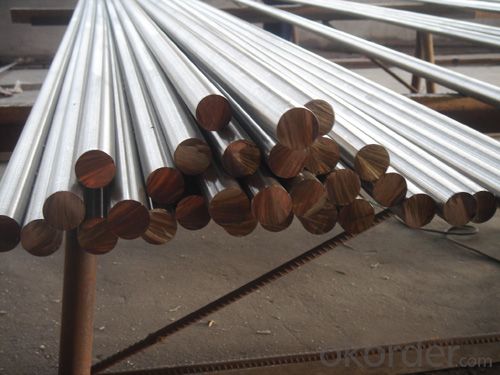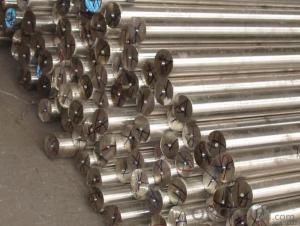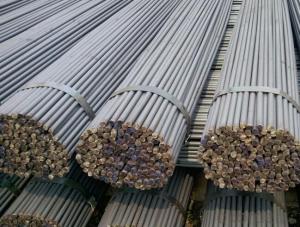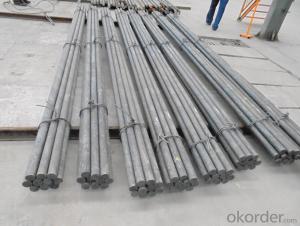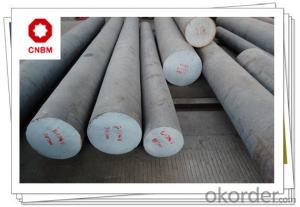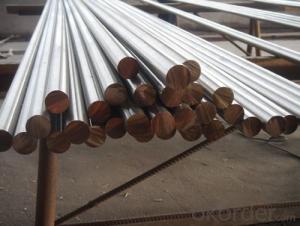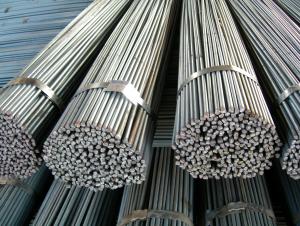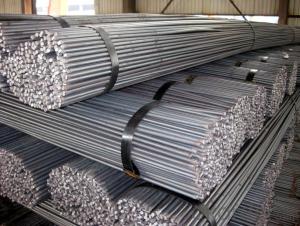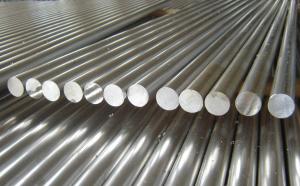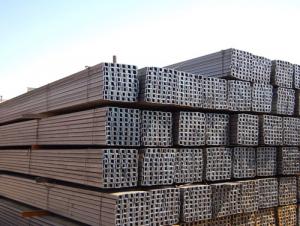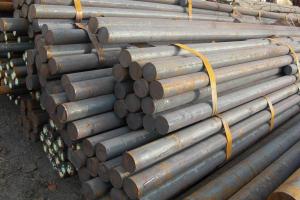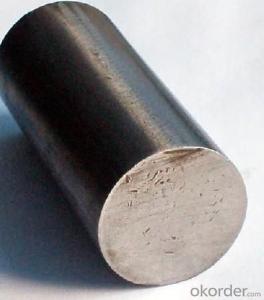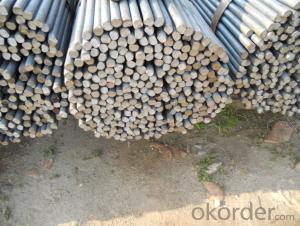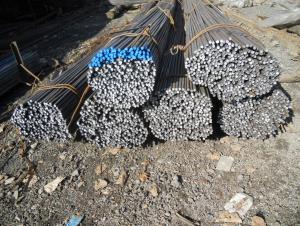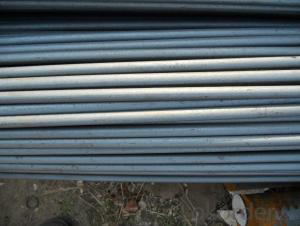Round Bar Hot Rolled High Quality GB Q195 Q235
- Loading Port:
- Tianjin
- Payment Terms:
- TT OR LC
- Min Order Qty:
- 25 m.t.
- Supply Capability:
- 2000000 m.t./month
OKorder Service Pledge
OKorder Financial Service
You Might Also Like
Specification
Product Description:
OKorder is offering Round Bar Hot Rolled High Quality GB Q195 Q235 at great prices with worldwide shipping. Our supplier is a world-class manufacturer of steel, with our products utilized the world over. OKorder annually supplies products to European, North American and Asian markets. We provide quotations within 24 hours of receiving an inquiry and guarantee competitive prices.
Product Applications:
1) Suitable for making various strong cutting tool abrasion resistance, impact resistance.
2) Used to produce all kinds of high hard and super hard saw blade, drill, tap, broach, gear hob and various kinds of milling cutter.
3) Used for advanced punching die, screw die, and the toughness and complicated shape of the punch, etc.
Product Advantages:
Round Bar Hot Rolled High Quality GB Q195 Q235 are durable, strong, and resist corrosion.
Main Product Features:
· Premium quality
· Prompt delivery & seaworthy packing (30 days after receiving deposit)
· Corrosion resistance
· Can be recycled and reused
· Mill test certification
· Professional Service
· Competitive pricing
Product Specifications:
1. Grade: GB, JIS, ASTM, EN
2. Grade: Q235, SS400, A36, S235JR
3. Diameter and mass: As below
Diameter | Mass | Diameter | Mass | Diameter | Mass |
(mm) | (kg/m) | (mm) | (kg/m) | (mm) | (kg/m) |
6 | 0.22 | 22 | 2.98 | 53 | 17.30 |
7 | 0.30 | 24 | 3.55 | 56 | 19.30 |
8 | 0.40 | 25 | 3.85 | 60 | 22.20 |
9 | 0.50 | 26 | 4.17 | 63 | 24.50 |
10 | 0.62 | 28 | 4.83 | 65 | 26.00 |
11 | 0.75 | 30 | 5.55 | 70 | 30.20 |
12 | 0.89 | 32 | 6.31 | 75 | 34.70 |
13 | 1.04 | 34 | 7.13 | 80 | 39.50 |
14 | 1.21 | 36 | 7.99 | 85 | 44.50 |
15 | 1.39 | 38 | 8.90 | 90 | 49.90 |
16 | 1.58 | 40 | 9.86 | 95 | 55.60 |
17 | 1.78 | 42 | 10.90 | 100 | 61.70 |
18 | 2.00 | 45 | 12.50 | 120 | 88.85 |
19 | 2.23 | 48 | 14.20 | 140 | 120.93 |
20 | 2.47 | 50 | 15.40 | 150 | 138.82 |
4. Material: Mild Steel
5. Heat treatment of high quality steel:
Fire: Isothermal annealing temperature is 800 ~ 880 °C, with 10 ~ 20 °C, the furnace cooling to about 600 °C, hardness above HB269.
Preheat temperature: 730-730 °C
Quenching temperature: 1190-1210 °C
Tempering temperature: 540-595 °C
Cold drawn, hardness 285 HBS
Cold drawn after annealing condition, hardness 277 HBS
Quenching methods: oil quenching, air cooling or salt bath quenching
FAQ:
Q1: How do you package the angle steel when shipping?
A1: All goods are packed in bundles with steel strips and shipped by container or break bulk.
Q2: The products are invoicing on theoritical weight or on actual weight?
A2: We can do it in both manners, according to the customers' request.
Q3: How do we guarantee the quality of our products?
A3: We have established an advanced quality management system which conducts strict quality tests at every step, from raw materials to the final product. At the same time, we provide extensive follow-up service assurances as required.

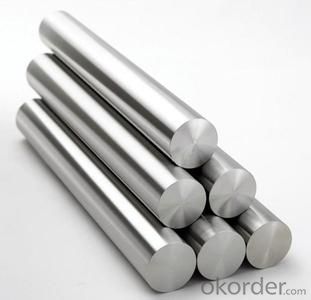
- Q: Can steel round bars be used in the electronics industry?
- Yes, steel round bars can be used in the electronics industry. They are commonly used for various applications such as providing structural support, heat dissipation, and grounding in electronic devices and equipment. Additionally, steel round bars offer excellent strength, durability, and conductivity, making them suitable for use in the electronics industry.
- Q: Can steel round bars be hardened or tempered?
- Yes, steel round bars can be hardened or tempered. Hardening is a heat treatment process that involves heating the steel to a specific temperature and then rapidly cooling it, typically by quenching it in water or oil. This process increases the hardness and strength of the steel, making it more resistant to wear and deformation. Tempering, on the other hand, is a heat treatment process that involves reheating the hardened steel to a lower temperature and then cooling it slowly. This process reduces the brittleness of the steel and improves its toughness and ductility. Both hardening and tempering can be done on steel round bars to achieve specific mechanical properties desired for various applications.
- Q: What are the different types of steel round bar surface coatings?
- Enhancing the performance and durability of steel round bars commonly involves utilizing various surface coatings. These coatings serve as a protective layer, safeguarding against corrosion and improving the overall appearance. Several types of surface coatings are frequently employed, including: 1. Galvanized Coating: This method entails applying a zinc layer to the steel round bar. It boasts exceptional corrosion resistance, making it ideal for outdoor applications that expose the steel to moisture and harsh environmental conditions. 2. Powder Coating: In this process, a dry powder is applied to the steel round bar and then cured under heat. The result is a robust and visually appealing finish that resists chipping, scratching, and fading. Powder coating offers a wide range of colors and textures, making it a popular choice for decorative purposes. 3. Epoxy Coating: An application of liquid thermosetting polymer, which subsequently cures to form a protective layer, characterizes epoxy coating. This type of coating exhibits excellent resistance to corrosion and chemicals, making it suitable for use in harsh environments. Industries such as oil and gas, marine, and chemical processing frequently employ epoxy coatings. 4. Chrome Plating: Chrome plating involves electroplating a chromium layer onto the steel round bar. This coating provides superior corrosion resistance and enhances the steel's appearance. Chrome plating is commonly utilized in applications where both corrosion protection and aesthetics are crucial, such as automotive parts and decorative hardware. 5. Nickel Plating: Similar to chrome plating, nickel plating involves electroplating a nickel layer onto the steel round bar. This coating offers exceptional corrosion resistance and is often utilized in applications where the steel is exposed to harsh chemicals or extreme temperatures. These examples only scratch the surface of the available options for steel round bar surface coatings. The choice of coating depends on the specific requirements of the application, including the desired level of corrosion resistance, chemical resistance, and aesthetic appeal. Selecting the appropriate coating based on the intended use of the steel round bar ensures optimal performance and longevity.
- Q: How are steel round bars used in the construction of airports and runways?
- Steel round bars are commonly used in the construction of airports and runways due to their strength, durability, and versatility. These bars are primarily used in the reinforcement of concrete structures, ensuring that the airport infrastructure can withstand heavy loads and extreme weather conditions. In the construction of airport runways, steel round bars are commonly used to reinforce the concrete pavement. The bars are placed within the concrete during construction, providing additional tensile strength to the runway. This reinforcement helps to prevent cracking and crumbling under the weight of aircraft, ensuring a safe and reliable surface for landing and takeoff. Additionally, steel round bars are used in the construction of airport terminals and other buildings within the airport complex. They are often utilized in the framework of the structures, providing support and stability. The bars are commonly used in the construction of columns, beams, and foundations, ensuring the overall structural integrity of the buildings. Furthermore, steel round bars are employed in the construction of ancillary facilities such as hangars, control towers, and fuel storage facilities. These bars are used to reinforce the concrete foundations and walls, providing additional strength and stability to these critical structures. In summary, steel round bars are essential components in the construction of airports and runways. Their use reinforces concrete structures, providing the necessary strength and durability to withstand heavy loads and harsh environmental conditions. From runways to terminals and ancillary facilities, steel round bars play a crucial role in ensuring the safety and reliability of airport infrastructure.
- Q: Can steel round bars be coated with protective finishes?
- Yes, steel round bars can be coated with protective finishes. These finishes help to prevent corrosion, enhance durability, and provide additional resistance to wear and tear. Common protective finishes for steel round bars include coatings such as galvanization, powder coating, and epoxy coatings.
- Q: Can steel round bars be used for making fuel system components?
- No, steel round bars are not suitable for making fuel system components as they lack the necessary corrosion resistance and compatibility with fuels.
- Q: Can steel round bars be used for making automotive suspension systems?
- Yes, steel round bars can be used for making automotive suspension systems. Steel round bars are commonly used in the manufacturing of suspension components such as control arms, sway bars, and torsion bars due to their high strength, durability, and ability to withstand heavy loads and vibrations.
- Q: What is the difference between hot rolled and cold rolled steel round bars?
- The production methods and resulting qualities of hot rolled and cold rolled steel round bars differ. Hot rolled steel round bars are created by heating billets or ingots to a high temperature and shaping them into the desired form using rolling mills. This process yields a scaled surface and a relatively rough texture. The dimensions of hot rolled steel round bars have a wider tolerance and are less precise. They are commonly used in applications where precision is not crucial, such as construction and general manufacturing. In contrast, cold rolled steel round bars are produced by cooling down hot rolled steel to room temperature and subjecting it to further processing through cold rolling mills. This process leads to a smoother surface and more accurate dimensions. Cold rolled steel round bars have a tighter tolerance and are frequently employed in applications that require precision, like automotive components, machinery parts, and tools. Regarding mechanical properties, hot rolled steel round bars generally possess lower tensile strength and yield strength compared to cold rolled steel round bars. Cold rolled steel also tends to have higher hardness and a more uniform grain structure, which can enhance its strength and durability. In summary, the primary distinction between hot rolled and cold rolled steel round bars lies in their production process, surface finish, dimensional accuracy, and mechanical properties. The selection between the two depends on the specific requirements of the application and the desired qualities of the final product.
- Q: What is the difference between steel and flat steel, round steel and steel?
- On the whole, the square section is square, flat section is rectangular, steel surface after finishing the round steel or steel wire (also called steel, silver bar).
- Q: How do steel round bars resist corrosion?
- Steel round bars resist corrosion due to the presence of a protective oxide layer on their surface, formed through the process of passivation. This oxide layer acts as a barrier, preventing the steel from coming into direct contact with corrosive substances, thereby inhibiting the oxidation reaction that leads to corrosion. Additionally, certain alloying elements, such as chromium, can be added to the steel composition to enhance its corrosion resistance properties.
Send your message to us
Round Bar Hot Rolled High Quality GB Q195 Q235
- Loading Port:
- Tianjin
- Payment Terms:
- TT OR LC
- Min Order Qty:
- 25 m.t.
- Supply Capability:
- 2000000 m.t./month
OKorder Service Pledge
OKorder Financial Service
Similar products
Hot products
Hot Searches
Related keywords



